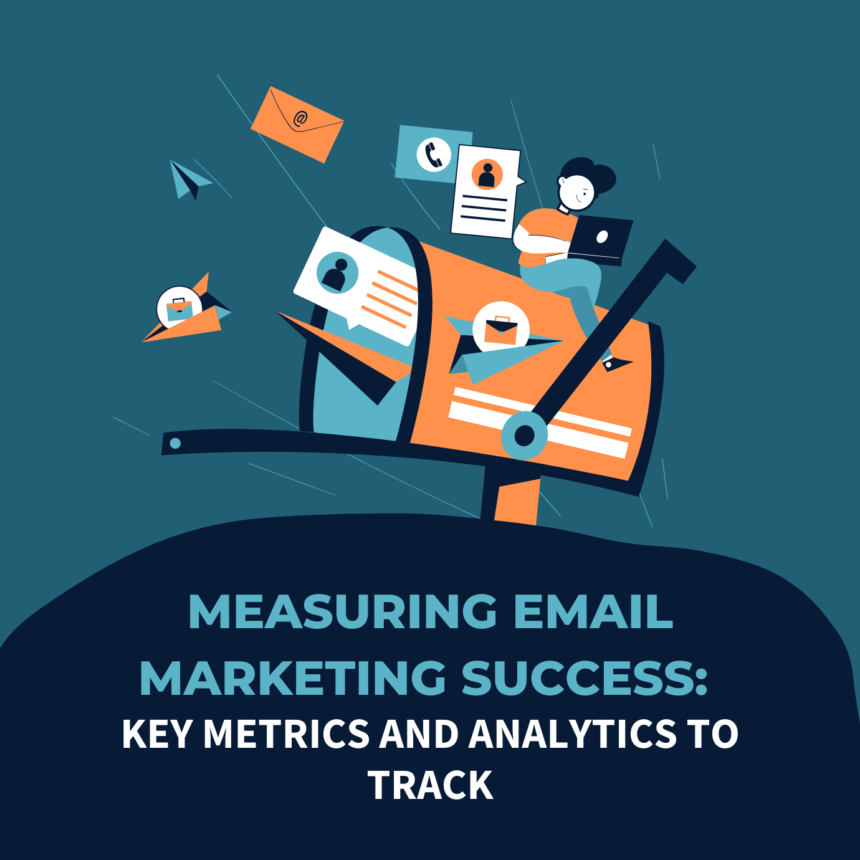Measuring the success of your email marketing campaigns is crucial for evaluating their performance and making data-driven improvements. By tracking key metrics and analyzing relevant analytics, you can gain valuable insights into the effectiveness of your email campaigns. Here are the key metrics and analytics to track when measuring email marketing success:
1. Open Rate: The open rate indicates the percentage of recipients who opened your email. It helps measure the effectiveness of your subject lines and the overall interest in your email content. A higher open rate generally signifies a well-targeted and engaging email.
2. Click-Through Rate (CTR): The click-through rate measures the percentage of recipients who clicked on a link within your email. It provides insights into the effectiveness of your email content, calls-to-action, and overall engagement. A higher CTR indicates that your email successfully encouraged recipients to take action.
3. Conversion Rate: The conversion rate tracks the percentage of recipients who completed a desired action, such as making a purchase, filling out a form, or downloading a resource. It helps assess the effectiveness of your email campaigns in driving desired outcomes.
4. Bounce Rate: The bounce rate measures the percentage of emails that were not delivered to recipients’ inboxes. Bounces can be categorized as either “hard bounces” (permanent delivery failures) or “soft bounces” (temporary delivery failures). Monitoring and minimizing bounce rates is crucial for maintaining good deliverability and list hygiene.
5. Unsubscribe Rate: The unsubscribe rate indicates the percentage of recipients who opted out of receiving future emails from you. It helps gauge the relevance and engagement of your email content. While some unsubscribes are natural, a high unsubscribe rate may indicate issues with content, frequency, or targeting.
6. List Growth Rate: The list growth rate measures the rate at which your email list is growing over a specific period. It reflects your ability to attract new subscribers and offset any unsubscribes or list attrition. Tracking list growth helps assess the effectiveness of your lead generation and list-building efforts.
7. Return on Investment (ROI): ROI measures the financial return generated from your email marketing efforts. It compares the revenue generated from your campaigns to the overall costs involved, including design, copywriting, email service provider fees, and campaign management. Calculating ROI helps determine the effectiveness and profitability of your email marketing campaigns.
8. Engagement Metrics: Engagement metrics include metrics like time spent on email, email sharing, social media interactions, and forwarding. These metrics provide insights into the level of engagement and interest generated by your emails beyond the traditional open and click-through rates.
9. Device and Client Analytics: Analyzing data on the devices and email clients used by your subscribers can help optimize your email design and ensure optimal rendering across different platforms. It enables you to tailor your emails to suit the preferences of your audience.
10. A/B Test Results: A/B testing involves comparing two or more variations of your emails to determine which performs better in terms of open rates, click-through rates, or conversions. Analyzing the results of A/B tests helps identify the most effective strategies for subject lines, email content, calls-to-action, and design elements.
11. Heatmaps and User Behavior: Heatmap analytics provide visual representations of how subscribers interact with your email, showing which areas receive the most attention or clicks. By analyzing user behavior, you can optimize your email layouts and placements of key elements for better engagement.
12. Email Client and ISP Metrics: Understanding email client and ISP metrics, such as deliverability rates, spam complaint rates, and inbox placement rates, helps assess the overall health and reputation of your email campaigns. Monitoring these metrics helps ensure your emails reach the intended recipients and avoid spam filters.
By tracking these metrics and analyzing the corresponding analytics, you can gain insights into the performance and effectiveness of your email marketing campaigns. Regularly evaluate these metrics, set benchmarks, and make data-driven optimizations to improve your email marketing strategies and achieve greater success.
